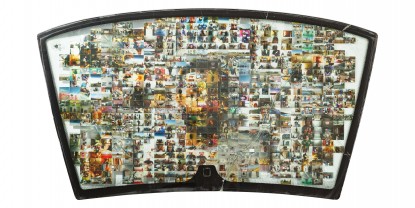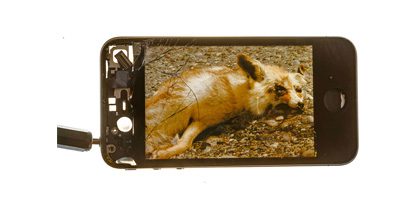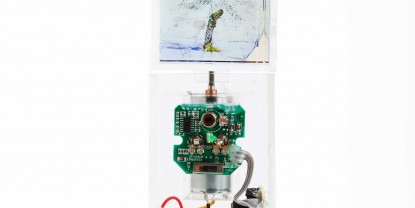Human, Animal, Tree
Arya Tabandehpoor
March 04 — March 16, 2016
The divergent collections of Aria Tabandehpoor are in fact pursuing a concept that is penetrating different media Through a common multimedia platform with a single photographical link, this concept has made him a very good example in conceptual art. The series “Tree”, “Human”, and “Animal” are different expressions of Tabandehpoor’s concerns, presenting the intertwinement of concepts such as nature, accident, damage, and memory. In all the works, the medium of photography is the unifying thread, but the presence of one medium is by no means a constant feature in the works × Each one of the series begins with photography, but then they spill over into other media in a multilayered process The quest for compelling contextual links, reaches to the technological tools, leading to different presentations This attitude is not only seen in the presentation, but also in an earlier stage, namely when the works were being formed. A good example of this would be the way Tabandehpoor has applied criminological tools in his previous series and the instruments for making pictures in “Human”. In “Animal”, pictures of roadkill in suburban areas are presented on smashed iPhone screens. Accident and destruction are things that have happened for both the format and the content. The glimmer of hope for revival in the iPhones ends in viewing of slaughtered animals. In order to shed light and draw digital connections, the artist exploits his friends’ used cables, tracking down the traces of memories in wires and sockets: a vain approach to cold technology with no sense of memory that, with its memory, creates our recollections nonetheless. The horrific carcass of animals, which is by the way a recurring theme, takes new nuances through Tabandehpoor’s plot, drawing the viewer’s attention to new relations and links × The broken screens have reduced the visually irritating quality of the works, but the galling content might as well leave a bitter taste in the viewers’ mouths. The “Tree” is a series of pictures shot from natural waste in urban and rural spaces. Trees are printed in glass cubes, inviting the viewers to draw near because of their small proportions but doing so makes them vanish from our sight, and using a machine whose mechanism is plain to see, the body of an entire work is formed, which can be dubbed the “retaliation machine”. The pleasant subject of this series refuses to be seen, pushing back the viewer in a constant rotation for a few minutes. These pictures that are trying to escape the gaze of the audience are parts of a whole series The fragmented identity of these works and their interactive game they are playing with us, show the post-media nature of Tabandehpoor’s works “Human” is the result of playing with “Mosaic” software for making puzzles and faces: the portrait of artist friends who were in car accidents, made of their nostalgic photographs in rea-life size of cars’ windshields The glasses are mostly broken, reminding us of the moment of the accident Composed a portrait from a collection of small photos, and breathing a new life into them is not easy But here the artist tries to go beyond a mere interesting game, and through the relation between the forms of presentation and content, he makes the viewer think and question The works generated by computer, however, are so conventional that they barely tickle the imagination. Aria Tabandehpoor’s quest through different media does not end in scattering and breaking. His conceptual approach indicates creative wanderings of a hyper-active mind around their common subjects. Most of his manipulations have led to interesting results that, at least according to his intentional disloyalty to media, are something rare in Iran’s art. These three series show that diversity and creativity can be very interesting, which, beyond its dizzying appearance, is following a sound, coherent logic. The diverse nature of some of the works, however, makes their inevitable failure easy to predict.


